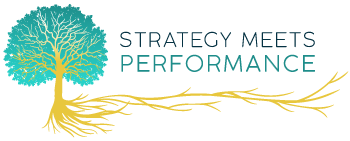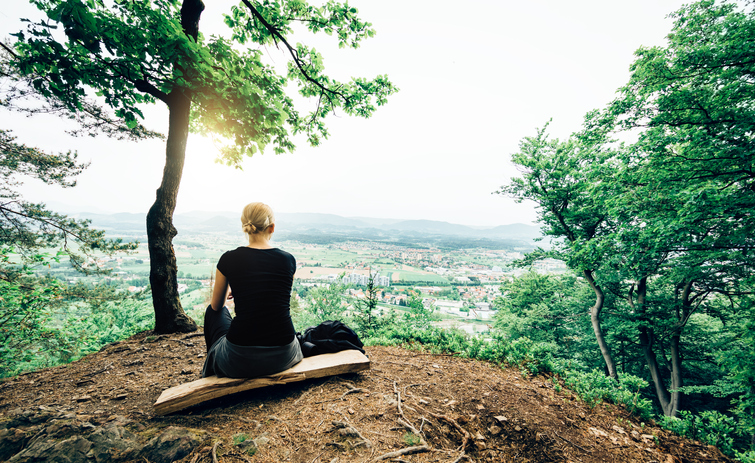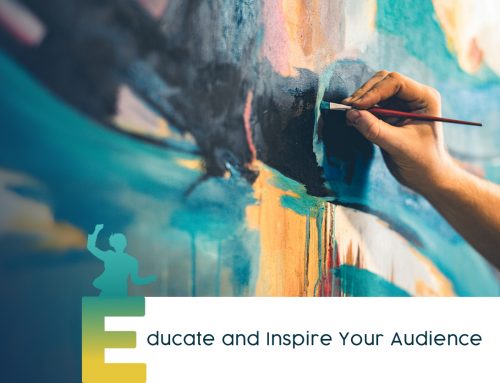“You can’t wait for inspiration, you have to go after it with a club.” — Jack London, American author, journalist and social activist.
I recently facilitated a workshop on time management and one of the challenges my participants shared was that there is too much to do in their day-to-day lives to have the downtime that is required for getting into “creative mode.” Since so much of our planning and innovation and thus effective time management, comes from brainstorming ideas then putting them into action, I thought this was a worthy topic to explore.
One of the challenges is that we are always in go-go mode with our electronics, checking email and looking for information on the computer, the PDA and the ipad. This is in addition to our daily work and family responsibilities. When do we have time to be creative? When can we sit down and release what’s on our mind without interruption?
Of course the above-mentioned electronic devices are fantastic tools for entering our ideas and looking up inspiration, but can they also get in our way? I asked a few people how they get into creativity mode and here is what I heard:
“I have to get out of the house and into a coffee shop — can’t do it at home!”
“I need to have a notepad and paper and just write all the things I’m thinking about.”
“I like to journal and write the big picture of what I want and that, then inspires me to get into the details. I can’t get into the details until I can articulate what it is I want to see happen.”
“I network with new and interesting people and learn so many things from them.”
“I unplug and I go somewhere, anywhere, out of the house with magazines, interesting things I printed out recently and a pen and notepad.”
“I let my mind wander when I’m driving or in the shower, times when it’s hard to be electronically connected (or when we shouldn’t be) and then I try to follow that inspiration.”
Blogger Peter Bregman, in his blog entitled “Why I returned my iPad,” stated that he returned his iPad because it kept him consumed at all times, which left no time for boredom, which he believes triggers creativity.
“Being bored is a precious thing, a state of mind we should pursue. Once boredom sets in, our minds begin to wander, looking for something exciting, something interesting to land on. And that’s where creativity arises.
My best ideas come to me when I am unproductive. When I am running but not listening to my iPod. When I am sitting, doing nothing, waiting for someone. When I am lying in bed as my mind wanders before falling to sleep. These “wasted” moments; moments not filled with anything in particular, are vital. They are the moments in which we, often unconsciously, organize our minds, make sense of our lives, and connect the dots. They’re the moments in which we talk to ourselves. And listen.”
David Allen, author of Getting Things Done, emphasizes that we can maximize our productivity and creativity through the Natural Planning Model.
The five steps are:
- Define the purpose and principles of what you want to accomplish to clarify focus
- Outcome visioning: You can’t do it until you can see it. Determine what success will look like
- Brainstorm: Fill in the gaps of the picture in your mind
- Organizing: Determine the most important elements and fill in the blanks
- Identifying next steps: Decide on the next actions for moving parts and planning
Within the 5 steps of the model, we often gloss over a critical step: Brainstorming. I often see this among the individuals and teams I coach. People are in such a rush mode that they feel the tactical steps are all they have time for. When they do actually facilitate a team brainstorming session, they are pleasantly surprised by the results.
“Wow, I would never have come up with that solution to our challenge. Why don’t I do this more?” a director recently asked me after I helped him facilitate a brainstorming session with his staff.
Because we are so caught up with being busy, we don’t take a step back to see the big picture and how we’d like things to be different.
Following are some ways to unplug to inspire your creativity:
- Take an hour each week, unplugged, in a neutral, relaxing setting (which may be away from the office or home) and just write. Put away the electronics and let your mind be free.
- Think about two things you’d like to see improvements on and write and jot and jot until you have some ideas in your notepad. Wait a day or so and add more. Get together with someone and go over it and see what you come up with together. There is magic in teamwork (I know some of you have experienced this!)
- Go to a movie, museum, or stationery store. Try taking a long walk. My husband and I come up with some of our best ideas when we go on long walks together.
- Do you need to getaway? If you can take a vacation, great. Use the time to let your mind wander about the things you want out of your life. If you can’t, take the time to go somewhere relaxing like the park or beach to unplug and reflect.
- Take pictures of things that inspire you, cut things out of magazines/papers or read the newspaper.
- Just get out of the house. I am always in awe of the interesting people I meet when I get out of the house and go to a networking event. Some of our best ideas will come from brainstorming with others.
- Use David Allen’s 5-step model on one of your current projects.
- Next time you are with a group of people at a restaurant or coffee shop and several of you are on your phones texting, surfing, talking….call a time-out and ask each person to give an idea for a challenge you have. Go to the next person and repeat.
In the spirit of Jack London, go after your inspiration!




